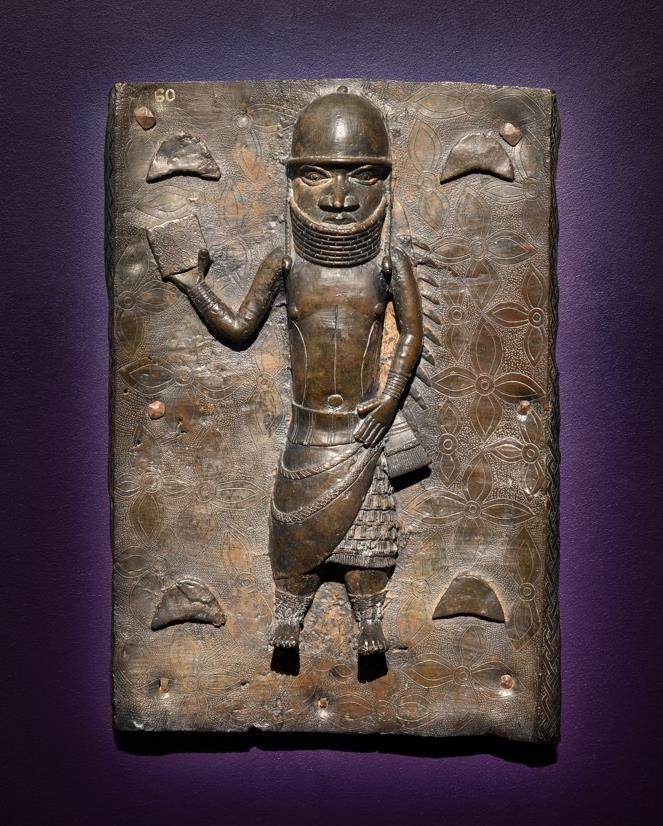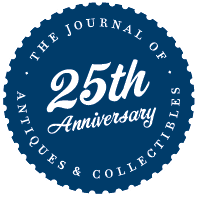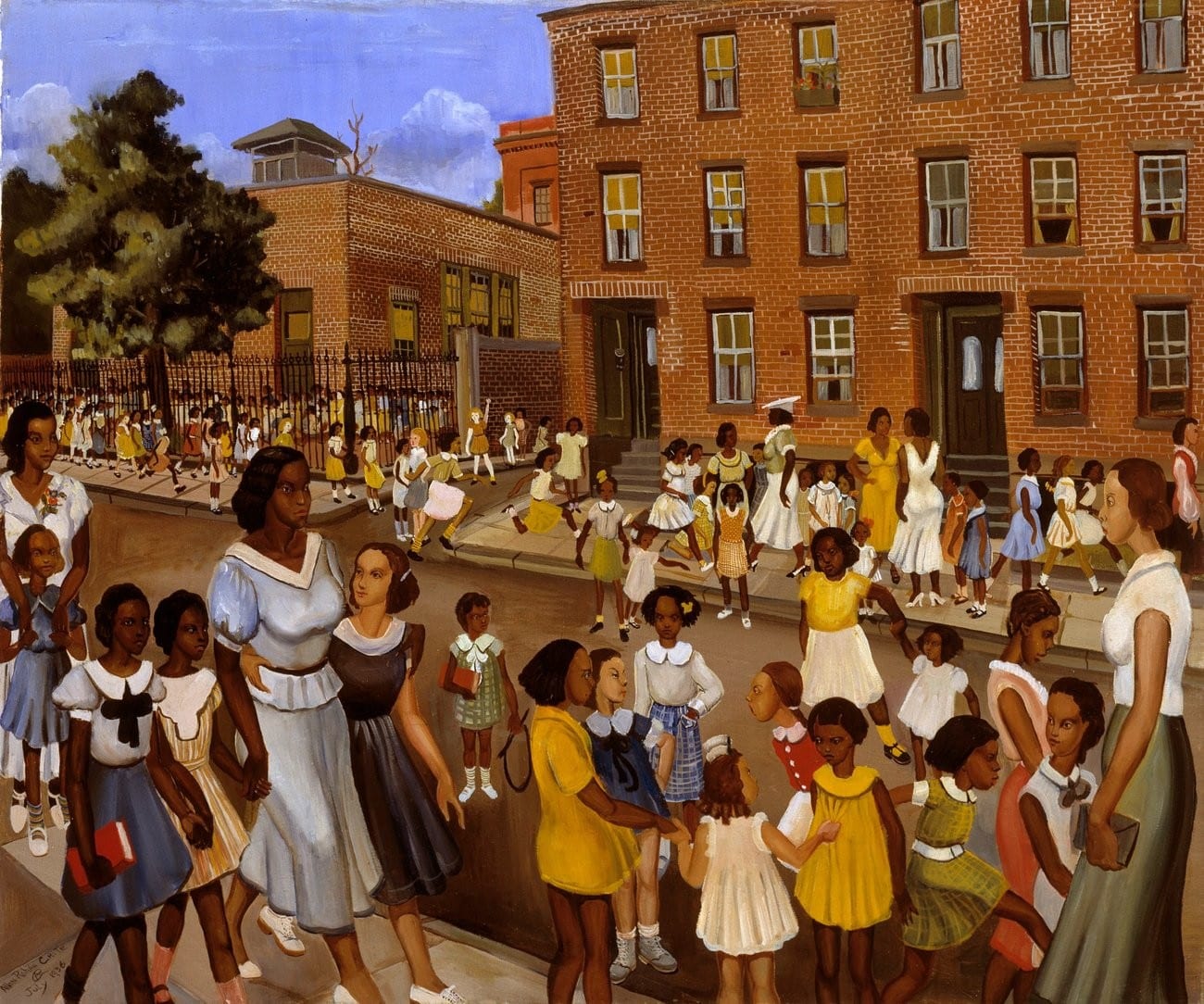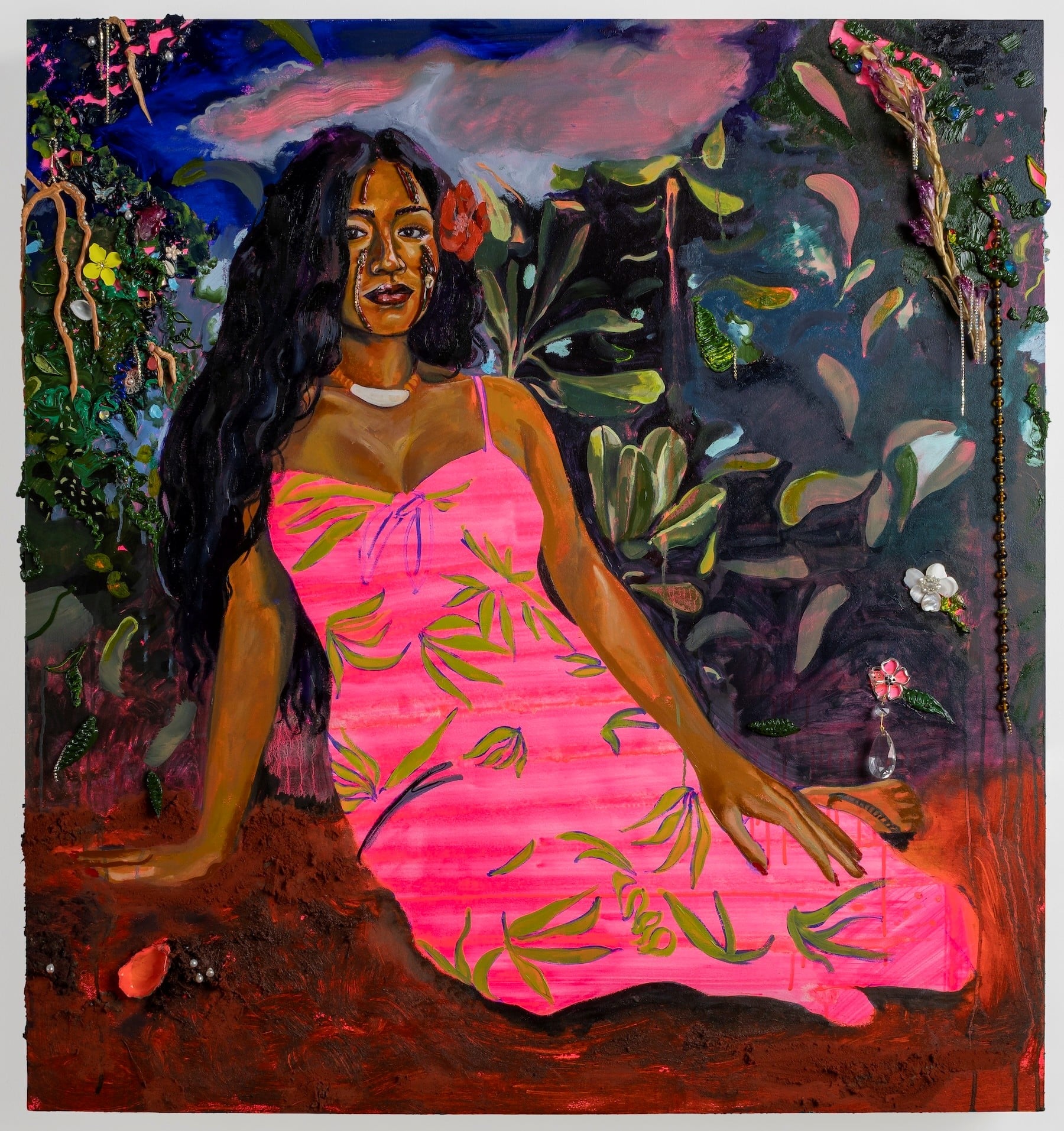Denver Art Museum and Nigerian Government Mark 50-Year Partnership in Repatriation and Cultural Collaboration
DENVER, CO – The Denver Art Museum (DAM) is proud to announce the successful continuation of its long-standing relationship with the government of Nigeria, the Oba of Benin and the National Commission for Museums and Monuments (NCMM) in Nigeria. For over five decades, this partnership has been dedicated to the respectful identification and repatriation of cultural artifacts, including the recent display of a Benin Bronze plaque on loan from the Nigerian government.
In April 2025, the DAM signed an agreement with the NCMM, acting on behalf of the Oba of the Kingdom of Benin, allowing for a five-year loan so the Benin Bronze plaque can be displayed as a “cultural ambassador” at the DAM. The Benin Bronze is now on view in the Arts of Africa gallery, celebrating the rich beauty of Benin’s artistic practice and highlighting the significant impact of the looting on Benin’s heritage, past and present.

Benin artist, Benin Plaque, 1550–1650. Bronze; 20 1/4 in. x 14 1/8 in. Work loaned out by the National Commission for Museums and Monuments of Nigeria in Support of the International Friendship Being Fostered through this Exhibition.
“We are deeply honored to partner with [the NCMM] in Nigeria. This profound collaboration, confirmed in 2025 as our Arts of Africa collection marks more than 50 years, is a monumental step forward,” said Christoph Heinrich, Frederick and Jan Mayer Director of the DAM. “To be entrusted with the temporary display of a Benin Bronze plaque on loan from the Nigerian government is a testament to the mutual respect and partnership we’ve built. We are committed to presenting a platform for native voices and perspectives, inviting curiosity and deep learning for our museum audiences through globally significant objects.”
This decades-long collaboration began in 1973 when 16 carved Yoruba verandah posts were stolen from the Institute of African Studies at the University of Ibadan in Oyo, Nigeria. Unaware of their illegal provenance, two of the looted posts entered the DAM’s Arts of Africa collection that same year. The museum learned of this act from Nigeria when the International Council of Museums reported the theft in 1974. Former DAM director Otto Bach contacted the University of Ibadan and restitution discussions were held between Nigeria and the DAM, resulting in the return of the two posts to Nigeria in February 1975.
“We encourage everyone to come to the museum and view the Benin Plaque to understand the history and beauty of Benin culture and the gruesome and complex history of colonialism,” said John Lukavic, Andrew W. Mellon Curator of Native Arts at the DAM. “The Arts of Africa collection holds a profoundly meaningful 50-year history within our museum. To be entrusted with the temporary display of a Benin Bronze plaque is a true honor.”
The Benin Bronzes—a collection of thousands of metal plaques and sculptures, primarily made of brass, that once adorned the royal palace of the Kingdom of Benin, located in what is now modern-day Nigeria—have garnered national and international attention. These intricate artworks, created by skilled Edo artisans from at least the 15th century onwards, served as historical records, commemorated past kings and queen mothers, and were used in various rituals. These artworks came to the U.S. and other Western countries after the British Raids of 1897, when British forces looted the palace during their invasion of Benin City. These stolen artifacts were then dispersed through sales and donations to museums and private collections worldwide, including those in the United States. In 2022, out of respect for the Kingdom of Benin and the government and people of Nigeria, the DAM removed the Benin Bronzes from view and deaccessioned them from the museum’s collection.
“The archival correspondence between then-Denver Art Museum Director Otto Bach and Dr. Ekpo Eyo, Director of the Federal Department of Antiquities at the Nigerian Museum—and later director for what is now NCMM—reflects the DAM’s long-standing efforts of returning objects like the Benin plaque back to their country of origin,” said DAM Provenance Research Fellow MacKenzie Coyle. “We are pleased to continue collaborations with NCMM with a new generation of scholars, provenance researchers and museum professionals.”
A public program is planned for the evening of April 21, 2026, with special guest Olugbile Holloway, Director General of the NCMM. Mr. Holloway will join Arts of Africa fellow Syokau Mutonga and members of DAM’s Provenance Department for a panel discussion focused on the significance of repatriating Benin Bronzes to Nigeria and the importance of fostering international relationships that go beyond the return of objects.
An audience Q&A will follow.
For more information and to register, visit www.denverartmuseum.org.
The DAM’s Arts of Africa gallery showcases highlights from the museum’s collection, encompassing nearly 800 objects, largely from the 19th and 20th centuries, across a range of mediums including painting, printmaking, sculpture, textiles and jewelry, as well as recent acquisitions of contemporary art. Spanning 2,300 sq. ft. on level four of the museum’s Hamilton Building, the Arts of Africa presentation centers a collection that illustrates the diversity, relevance, and dynamism of creativity and culture across Africa. Historically, the DAM has earnestly presented diasporic African culture with respect and regard for repatriation and a priority for relationship-building with communities, artists and cultural organizations, as well as governments across Africa.
From the 1970s through today, the DAM has been a cultural institution dedicated to reparative and thoughtful representation of diasporic African identities and how that connects to the representation of Black Americans across culture and art. This work represents a 50-year history with even more transformative work ahead. As an ethnographic art museum, the DAM is committed to stewarding and presenting our collections, including Arts of Africa, faithfully, earnestly and accurately, to be a museum for everyone.
Planning Your Visit
The most up-to-date information on planning a visit to the Denver Art Museum can be found online under the Plan Your Visit tab. Use this page to find details on ticket pricing, public transit options and access information. General admission for museum members is free every day. Youth aged 18 and under receive free general admission everyday thanks to the museum’s Free for Kids program. Free for Kids also underwrites free admission for school and youth group visits.
About the Denver Art Museum
The Denver Art Museum is an educational, nonprofit resource that sparks creative thinking and expression through transformative experiences with art. Its mission is to enrich lives by sparking creative thinking and expression. Its holdings reflect the city and region—and provide invaluable ways for the community to learn about cultures from around the world. Metro residents support the Scientific and Cultural Facilities District (SCFD), a unique funding source serving hundreds of metro Denver arts, culture and scientific organizations.
For museum information, visit www.denverartmuseum.org or call 720-865-5000.





